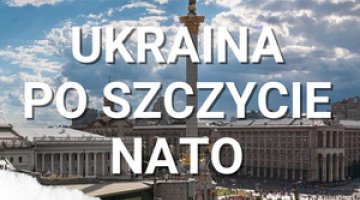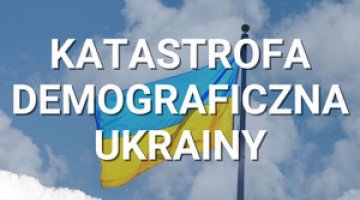Zelensky in Bucharest: moving towards a new opening
On 10 October, President Volodymyr Zelensky paid an official visit to Bucharest, where he met with President Klaus Iohannis, Prime Minister Marcel Ciolacu, the Presidents of the Chamber of Deputies and the Senate, and other officials. The two presidents issued a joint statement in which they declared that mutual relations would be raised to the level of strategic partnership, they pledged to double the volumes of Ukrainian grain passing through Romanian ports from 2 to 4 million tonnes per month and stressed the need to expand infrastructural links. The document also mentioned that Ukrainian F-16 fighter jet pilots were scheduled to start training at a newly-launched NATO training centre in Romania and suggested that Ukrainian soldiers were already using or would soon be using Romania’s other training facilities.
President Iohannis expressed his unequivocal support for Ukraine’s Euro-Atlantic aspirations. The two sides announced that they will hold a joint meeting of the Romanian and Ukrainian governments in Kyiv later in October. They also agreed on the need to cooperate on minority issues (ethnic Ukrainians in Romania and ethnic Romanians in Ukraine) and solve the problem of the “artificial divide between the Moldovan and Romanian languages” in Ukrainian legislation. President Zelensky also announced the launch of a new grain transit route running through Romania and Moldova.
Commentary
- Zelensky’s visit to Romania, his first to this country since the outbreak of the full-scale war, is part of the process of intensifying and deepening bilateral relations that has been underway in recent weeks. In the space of one month, Iohannis met with Zelensky no less than three times, including during a session of the UN General Assembly in New York and at a summit of the European Political Community in Granada. Romania’s decision not to impose a ban on Ukrainian grain imports after the European Commission lifted the relevant restrictions on 15 September has also had a positive effect on bilateral relations – although the government in Bucharest won assurances from Ukraine that there will in fact be no imports of Ukrainian grain until the two sides work out an agreement that satisfies both parties.
- By tightening cooperation with Ukraine, Romania is primarily trying to strengthen its position in relations with the US, the European Commission and the EU’s major countries. Given the current tensions between Ukraine and Poland, the new Slovak government’s reluctance towards Ukraine and Hungary’s consistent refusal to provide assistance to its northeastern neighbour, this stance allows Romania to portray itself as a stable, reliable partner and one of the key pillars of economic and military support for Ukraine on NATO’s eastern flank.
- In addition to the transit of Ukrainian grain, military cooperation was the next key topic during Zelensky’s visit to Bucharest. Romania is one of the few countries that have provided support to Ukraine, but has not disclosed the details of its assistance (publicly available data indicates that this support is worth a few million euros). Romania has been supplying Ukraine with certain quantities of equipment, most likely mainly ammunition. Without providing details, President Zelensky said in Bucharest that Romania had transferred a total of 15 packages of military aid, including artillery shells. Summing up his meeting with Iohannis, he said that these talks had resulted in “good news on artillery and air defence systems”. The government in Bucharest has cited security concerns as the reason for its reluctance to reveal the scale of its military support, but the real reasons possibly include the Romanian public’s moderately favourable attitude towards providing such aid (in March, 32% of Romanian people supported the transfers of weapons to Ukraine) and its relatively small value, compared to the other countries in the region.
- Zelensky’s visit marks an attempt to forge a new opening in Ukrainian-Romanian relations, which until recently have not been particularly dynamic. Ukraine’s current national security strategy from September 2020 does not mention Romania at all, while Romania’s attitude since the beginning of Russia’s full-scale aggression has been cautious. Ukrainian officials have made few statements about Romanian aid; they mostly expressed their gratitude for this assistance, but did not emphasise Romania’s role. The situation changed as Romania became increasingly important for Ukrainian grain exports. While the route through the Danube ports to Constanța was hardly used before 2022, the volume of Ukrainian goods transiting Romania increased over the following months to reach more than 2 million tonnes per month in August and September this year. After Russia reinstated its blockade of the Black Sea grain corridor in mid-July, Romania became the main gateway for Ukrainian food exports.
- The declaration of cooperation signed by the two presidents and the announcement that relations would be upgraded to a strategic partnership underscored Romania’s growing importance to Ukraine. By taking these steps, the Ukrainian government wants to show its appreciation for Romania as a proven and reliable partner which, as Zelensky stressed, “supported Ukraine at the most difficult time” and showed “maximum constructive solidarity”. Ukraine also wants to highlight Romania’s conciliatory stance (compared to the other countries in the region) on unblocking the embargo on imports of selected grain products from Ukraine. Zelensky’s decision to visit Bucharest stems from the need to seek further ways to increase Ukrainian exports through Romanian ports, as well as to expand military cooperation and step up the supplies of military aid to Ukraine.
- As the Ukrainian government wished, the Romanian government confirmed its support for Ukrainian efforts to start accession negotiations with the European Union by the end of this year. However, this support is not unconditional: President Iohannis stressed the need to carry out the necessary reforms in Ukraine, above all to amend the existing legislation on the rights of national minorities, which is one of the European Commission’s conditions for opening accession negotiations. In recent years, Ukraine has adopted laws that restrict the use and teaching of the Romanian language, which has caused tensions in bilateral relations. The announcement that the two governments will start working together to resolve this issue is the first step towards potentially reaching an agreement.
- In a success for Romania, the joint statement by the two presidents contained a passage on resolving the issue of the “artificial divide between the Moldovan and Romanian languages”. Under Ukrainian law, there are two separate minorities: Romanian (c. 150,000 people) and Moldovan (c. 250,000), who speak different languages. Romania has been trying for years to persuade Ukraine to recognise the Moldovan minority as a Romanian minority (the Romanian government does not recognise the distinctiveness of the Romanian and Moldovan peoples) and to reverse its recognition of the Moldovan language, which according to linguistics is a dialect of Romanian. However, the government in Kyiv has long opposed the idea of recognising the two languages, and thus the two minorities, as identical, while Moldova has shown little interest in this matter. Defined in this way, the Romanian minority would number around 400,000 people and constitute the second largest minority group after Russians, which would give it more political clout and allow Romania to exert more pressure on linguistic and educational issues.
- Zelensky’s visit was marred by the cancellation of his planned appearance before the Romanian parliament. Although no official reason was given, this probably stemmed from concerns over a possible backlash from anti-Ukrainian MPs affiliated with the national-conservative Alliance for the Union of Romanians (AUR) and Senator Diana Șoșoacă from the radical S.O.S. Romania party, who is known for her extreme anti-Ukrainian stance. Indeed, during Zelensky’s visit to Romania, Șoșoacă appeared in parliament with a map of the so-called Greater Romania, which showed the country’s borders in the interwar period, including the territory of northern Bukovina and Budjak, and she urged Ukraine to return the “stolen territories” and called Zelensky a “Nazi”.





